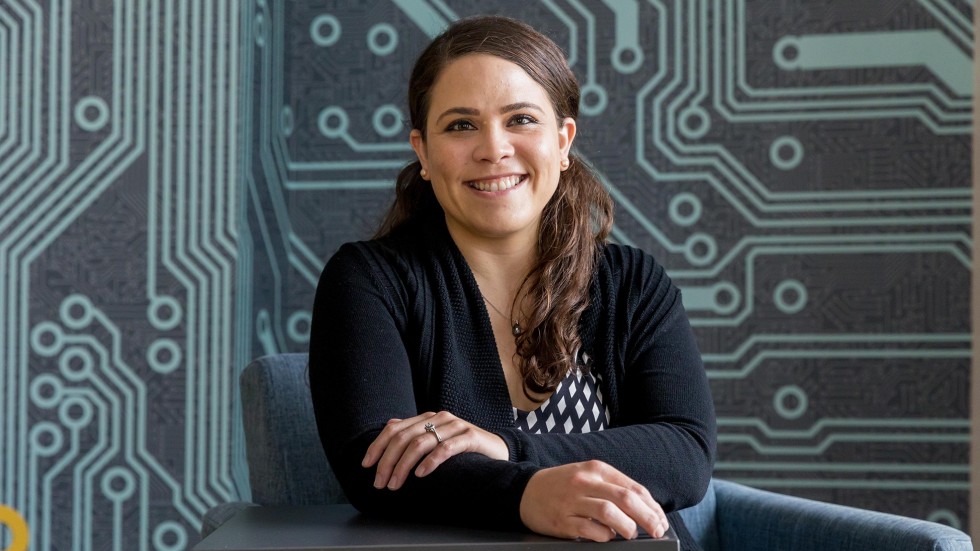
Girls Get Math
Assistant Professor of Mathematics Leyda Almodóvar Velázquez talks about the GirlsGetMath@Stonehill program.
Normally you might dunk a donut in your coffee. But did you know that using math, you can turn a coffee mug into the shape of a donut without breaking it?
This past July, 17 high school students learned about the experiment—and topology, the mathematical principle that explains it—while on campus as part of our first-ever class of GirlsGetMath@Stonehill scholars.
The competitive five-day program, developed at Brown University in 2014, is meant to address longstanding opportunity gaps in math education—an area with documented gender, income and racial disparities in collegiate, graduate and post-graduate degree attainment.
In 2019, educators from across the country applied for the opportunity to expand the program to their campus, and Assistant Professor of Mathematics Leyda Almodóvar Velázquez led one of four winning applications, earning a grant to bring the program to Stonehill.
Almodóvar knows how important a supportive environment is to success in math. While she was growing up in Puerto Rico, her mother, an engineer, encouraged Almodóvar to follow in her footsteps. She sees the positive reinforcement from her parents as a difference-maker that many kids may not have. With that in mind, Almodóvar worked to ensure that the program was attended by students who love math but might not have that same supportive environment.
“We’re not requesting transcripts—we ask for a letter from students’ high school teachers describing why they’re excited about math,” says Almodóvar. “I’m more interested in helping low-income and disadvantaged students that truly want to learn but don’t have as many resources. When you focus on interest rather than academic prowess, you help ensure that this isn’t a program just for students that already have access to the tools to get into college.”
We’re not requesting transcripts—we ask for a letter from students’ high school teachers describing why they’re excited about math.
Open to students entering 10th or 11th grade, regardless of gender, GirlsGetMath fosters a deeper interest in math through hands-on activities, interactive lectures and daily computer labs. This summer at Stonehill—with support from mathematics professors Jane HyoJin Lee, who also co-organized the program, and Janelle Hammond as well as teaching assistants Katherine Griffin ’21 and Jenna Goldberg ’23—attendees learned how to modify color in images using mathematical code, toured labs and learned about college-level science and math course work. They also solved puzzles involving cryptography, worked on a probability activity, and learned how recommendation systems, such as Netflix, work.
The program, which will run again next summer, is meant not only to educate students and close opportunity gaps, but also to build a long-term support system for students who want to pursue a mathematics education.
“We wanted to create a network so that students had friends with similar interests,” says Almodóvar. “We also want to be mentors to these students well beyond the program so that if they have questions about college, they’re able to reach out.”
The plan is for that network of students to grow each year, and over time, build into a culture shift in mathematics-reliant professions.
Stonehill Alumni Magazine
Summer | Fall 2021
